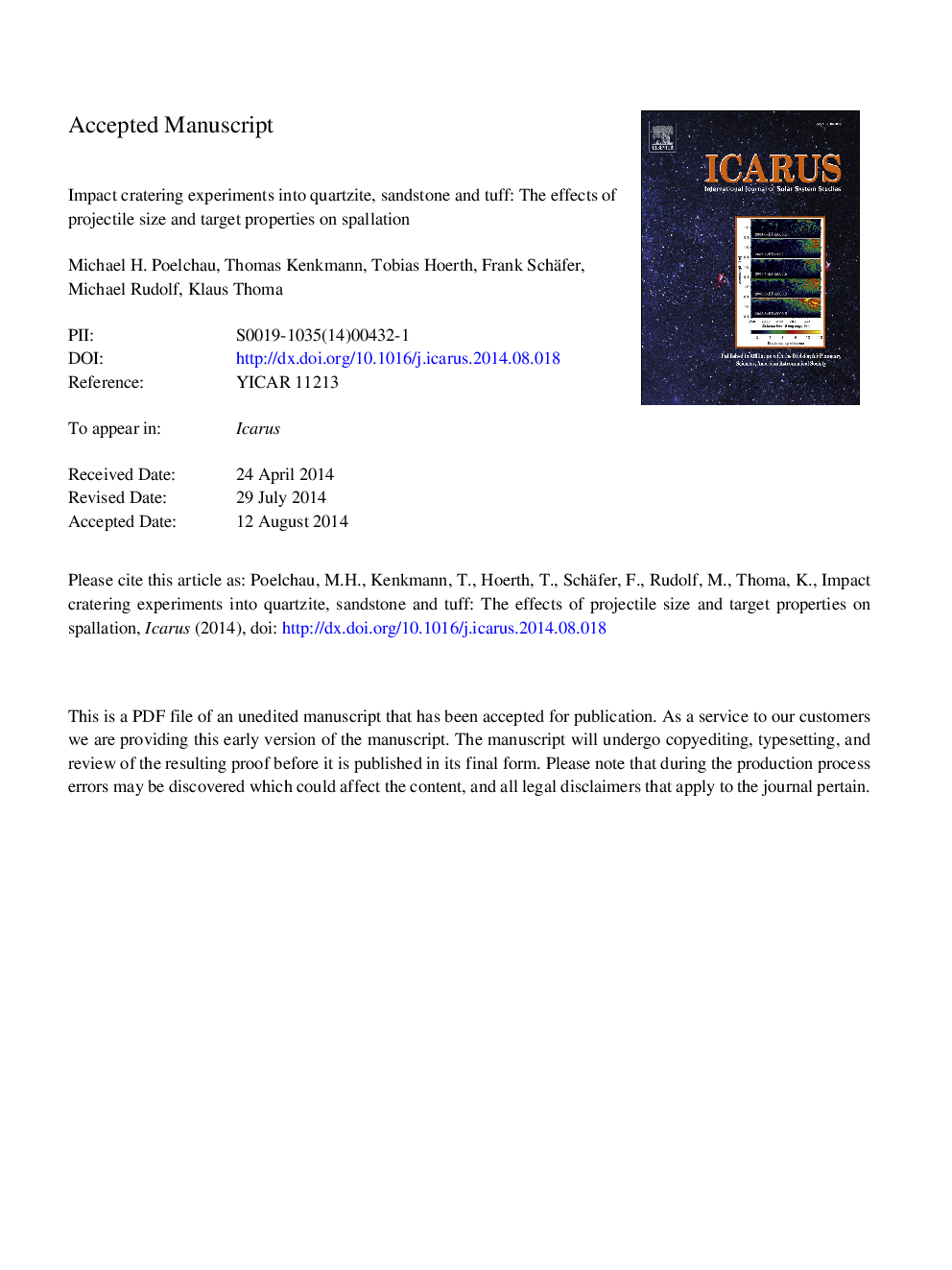| Article ID | Journal | Published Year | Pages | File Type |
|---|---|---|---|---|
| 8137640 | Icarus | 2014 | 31 Pages |
Abstract
Impact cratering experiments were performed on quartzite, tuff, and dry and water-saturated sandstones in the framework of the MEMIN research unit. 2.5-12Â mm diameter projectiles were accelerated to â¼5Â km/s. Evaluation of the resulting craters shows that crater volumes and crater efficiencies of large-scale experiments are greater than predicted by strength scaling laws. A method to approximate the transient crater volume shows that this effect is largely due to an increase in spallation. Strength scaling laws are used to determine the reduction of tensile strength in large-scale experiments and show a decrease by a factor of 1.8-3.6. This strength reduction can be correlated with a decrease in strain rate for larger projectiles, and with the Weibull theory of strength reduction for larger rock sample sizes. Further variations in spallation are observed between different target materials; a decrease in spall is suggested to be controlled by increased porosity.
Keywords
Related Topics
Physical Sciences and Engineering
Earth and Planetary Sciences
Space and Planetary Science
Authors
Michael H. Poelchau, Thomas Kenkmann, Tobias Hoerth, Frank Schäfer, Michael Rudolf, Klaus Thoma,
